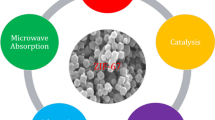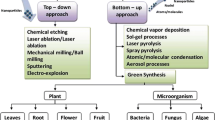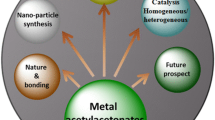Abstract
Herein, we report a simple one-pot synthesis of water-dispersible gold nanoparticles (AuNPs) by using meso-tetra(methyl) meso-tetra hydrazide-functionalized calix[4]pyrrole (ECPTH) as both reducing and stabilizing template. The characterization of ECPTH-AuNPs has been carried out by UV-Vis spectroscopy, transmission electron microscope, X-ray diffraction (XRD), dynamic light scattering (DLS), and zeta potential techniques. The spherical shaped nanoparticles are highly stable with an average size of 8 ± 2 nm. The mechanistic insights rendered by the computational study have suggested that ECPTH can successfully cap the Au via utilizing the hydrazide arms. The nanoparticles functioned as an effective heterogeneous catalyst for the 4-nitrophenol reduction and ECPTH as capping ligand enhances the catalytic activity via a synergistic effect. This work contributes a new catalytic pathway for the degradation of hazardous and toxic pollutants using highly efficient and cost-effective supramolecular-functionalized nanocatalyst.

Graphical Abstract







Similar content being viewed by others
References
Aksu Z (2005) Application of biosorption for the removal of organic pollutants: a review. Process Biochem 40(3-4):997–1026
Bharath G, Veeramani V, Chen S-M, Madhu R, Raja MM, Balamurugan A, Mangalaraj D, Viswanathan C, Ponpandian N (2015) Edge-carboxylated graphene anchoring magnetite-hydroxyapatite nanocomposite for an efficient 4-nitrophenol sensor. RSC Adv 5(18):13392–13401
Lipczynska-Kochany E (1991) Novel method for a photocatalytic degradation of 4-nitrophenol in homogeneous aqeuous solution. Environ Technol 12(1):87–92
Oturan MA, Peiroten J, Chartrin P, Acher AJ (2000) Complete destruction of p-nitrophenol in aqueous medium by electro-Fenton method. Environ Sci Technol 34(16):3474–3479
Howe GE, Marking LL, Bills TD, Rach JJ, Mayer FL (1994) Effects of water temperature and pH on toxicity of terbufos, trichlorfon, 4-nitrophenol and 2, 4-dinitrophenol to the amphipod Gammarus pseudolimnaeus and rainbow trout (Oncorhynchus mykiss). Environ Toxicol Chem 13(1):51–66
Harrison MA, Barra S, Borghesi D, Vione D, Arsene C, Olariu RI (2005) Nitrated phenols in the atmosphere: a review. Atmos Environ 39(2):231–248
Zhao P, Feng X, Huang D, Yang G, Astruc D (2015) Basic concepts and recent advances in nitrophenol reduction by gold-and other transition metal nanoparticles. Coord Chem Rev 287:114–136
Alex S, Tiwari A (2015) Functionalized gold nanoparticles: synthesis, properties and applications—a review. J Nanosci Nanotechnol 15(3):1869–1894
De Silva N, Ha J-M, Solovyov A, Nigra MM, Ogino I, Yeh SW, Durkin KA, Katz A (2010) A bioinspired approach for controlling accessibility in calix [4] arene-bound metal cluster catalysts. Nat Chem 2(12):1062–1068
Ha J-M, Solovyov A, Katz A (2009) Synthesis and characterization of accessible metal surfaces in calixarene-bound gold nanoparticles. Langmuir 25(18):10548–10553
Rambabu D, Pradeep CP, Dhir A (2015) Self-assembled material of palladium nanoparticles and a thiacalix [4] arene Cd (II) complex as an efficient catalyst for nitro-phenol reduction. New J Chem 39(10):8130–8135
Kongor A, Panchal M, Athar M, Jha PC, Jhala D, Sindhav G, Shah N, Jain VK (2018) Selective fluorescence sensing of Cu (II) ions using calix [4] pyrrole fabricated Ag nanoparticles: a spectroscopic and computational approach. J Mol Liq 269:467–475
Kongor A, Panchal M, Athar M, Makwana B, Sindhav G, Jha P, Jain V (2018) Synthesis and modeling of calix [4] pyrrole wrapped Au nanoprobe for specific detection of Pb (II): antioxidant and radical scavenging efficiencies. J Photochem Photobiol 364:801–810
Kongor A, Panchal M, Athar M, Mehta V, Bhatt K, Jha P, Jain V (2018) Heterogeneous hydrogenation using stable and reusable calix [4] pyrrole fenced Pt nanoparticles and its mechanistic insight. Appl Surf Sci 437:195–201
Akar A, Aydogan A (2005) Synthesis of meso-tetra acid and ester functionalized calix [4] pyrroles. J Heterocyclic Chem 42(5):931–934
Makwana BA, Darjee S, Jain VK, Kongor A, Sindhav G, Rao MV (2017) A comparative study: metal nanoparticles as fluorescent sensors for biomolecules and their biomedical application. Sensors Actuators B Chem 246:686–695
Lang Z, Gabas IM, López X, Clotet A, Jesús M, Mitchell SG, Poblet JM (2016) On the formation of gold nanoparticles from [Au III Cl 4]− and a non-classical reduced polyoxomolybdate as an electron source: a quantum mechanical modelling and experimental study. New J Chem 40(2):1029–1038
Bowers KJ, Chow DE, Xu H, Dror RO, Eastwood MP, Gregersen BA, Klepeis JL, Kolossvary I, Moraes MA, Sacerdoti FD (2006) Scalable algorithms for molecular dynamics simulations on commodity clusters. In: SC 2006 conference, proceedings of the ACM/IEEE. IEEE, pp 43-43
Release S (2014) 1: Desmond molecular dynamics system, version 3.7. DE Shaw Research. Maestro-Desmond Interoperability Tools, New York version 3
Frisch MJ, Trucks G, Schlegel HB, Scuseria G, Robb M, Cheeseman J, Scalmani G, Barone V, Mennucci B, Petersson G (2009) Gaussian 09, revision A. 1. Gaussian Inc Wallingford CT 27:34
Singh DK, Jagannathan R, Khandelwal P, Abraham PM, Poddar P (2013) In situ synthesis and surface functionalization of gold nanoparticles with curcumin and their antioxidant properties: an experimental and density functional theory investigation. Nanoscale 5(5):1882–1893
Ghosh SK, Pal T (2007) Interparticle coupling effect on the surface plasmon resonance of gold nanoparticles: from theory to applications. Chem Rev 107(11):4797–4862
Liu X, Atwater M, Wang J, Huo Q (2007) Extinction coefficient of gold nanoparticles with different sizes and different capping ligands. Colloids Surf. B 58(1):3–7
Zhang G, Guo W, Wang X (2007) Sonochemical formation of nanocrystalline gold in aqueous solution. Mater Res Innov 11(4):201–203
Assefa AG, Mesfin AA, Akele ML, Alemu AK, Gangapuram BR, Guttena V, Alle M (2017) Microwave-assisted green synthesis of gold nanoparticles using Olibanum gum (Boswellia serrate) and its catalytic reduction of 4-nitrophenol and hexacyanoferrate (III) by sodium borohydride. J Clust Sci 28(3):917–935
Huang N, Lim H, Radiman S, Khiew P, Chiu W, Hashim R, Chia CH (2010) Sucrose ester micellar-mediated synthesis of Ag nanoparticles and the antibacterial properties. Colloids Surf. A 353(1):69–76
Hashmi ASK, Hutchings GJ (2006) Gold catalysis. Angew Chem Int Ed 45(47):7896–7936
Hashmi ASK, Hutchings GJ (2013) Gold Catalysis–the journey continues. Catal Sci Technol 3(11):2861–2861
Nigra MM, Ha J-M, Katz A (2013) Identification of site requirements for reduction of 4-nitrophenol using gold nanoparticle catalysts. Catal Sci Technol 3(11):2976–2983
Ray P, Clément M, Martini C, Abdellah I, Beaunier P, Rodriguez-Lopez J-L, Huc V, Remita H, Lampre I (2018) Stabilisation of small mono-and bimetallic gold–silver nanoparticles using calix[8]arene derivatives. New J Chem 42(17):14128–14137
Zhang Z, Shao C, Zou P, Zhang P, Zhang M, Mu J, Guo Z, Li X, Wang C, Liu Y (2011) In situ assembly of well-dispersed gold nanoparticles on electrospun silica nanotubes for catalytic reduction of 4-nitrophenol. Chem Commun 47(13):3906–3908
Panigrahi S, Basu S, Praharaj S, Pande S, Jana S, Pal A, Ghosh SK, Pal T (2007) Synthesis and size-selective catalysis by supported gold nanoparticles: study on heterogeneous and homogeneous catalytic process. J Phys Chem C 111(12):4596–4605
Ibrahim N, Vilhelmsen MH, Pernpointner M, Rominger F, Hashmi ASK (2013) Gold phenolate complexes: synthesis, structure, and reactivity. Organometallics 32(9):2576–2583
Kuroda K, Ishida T, Haruta M (2009) Reduction of 4-nitrophenol to 4-aminophenol over Au nanoparticles deposited on PMMA. J Mol Catal A 298(1-2):7–11
Zhang Y, Liu S, Lu W, Wang L, Tian J, Sun X (2011) In situ green synthesis of Au nanostructures on graphene oxide and their application for catalytic reduction of 4-nitrophenol. Catal Sci Technol 1(7):1142–1144
Lin F-h, R-a D (2011) Bifunctional Au− Fe3O4 heterostructures for magnetically recyclable catalysis of nitrophenol reduction. J PhysChem C 115(14):6591–6598
Fan C-M, Zhang L-F, Wang S-S, Wang D-H, Lu L-Q, Xu A-W (2012) Novel CeO 2 yolk–shell structures loaded with tiny Au nanoparticles for superior catalytic reduction of p-nitrophenol. Nanoscale 4(21):6835–6840
Wu X, Lu C, Zhou Z, Yuan G, Xiong R, Zhang X (2014) Green synthesis and formation mechanism of cellulose nanocrystal-supported gold nanoparticles with enhanced catalytic performance. Environ Sci Nano 1(1):71–79
Hayakawa K, Yoshimura T, Esumi K (2003) Preparation of gold−dendrimer nanocomposites by laser irradiation and their catalytic reduction of 4-nitrophenol. Langmuir 19(13):5517–5521
Seo YS, Ahn E-Y, Park J, Kim TY, Hong JE, Kim K, Park Y, Park Y (2017) Catalytic reduction of 4-nitrophenol with gold nanoparticles synthesized by caffeic acid. Nanoscale Res Lett 12(1):7
Gong C, Zhou Z, Li J, Zhou H, Liu R (2018) Facile synthesis of ultra stable Fe3O4@Carbon core-shell nanoparticles entrapped satellite au catalysts with enhanced 4-nitrophenol reduction property. J Taiwan Inst Chem Eng 84:229–235
Marcelo G, Muñoz-Bonilla A, Fernández-García M (2012) Magnetite–polypeptide hybrid materials decorated with gold nanoparticles: study of their catalytic activity in 4-nitrophenol reduction. J Phys Chem C 116(46):24717–24725
Funding
The authors thank the financial assistance provided by DST-SERB, New Delhi, through the project scheme SERB REF. No EMR/2016/001958. The authors, Anita Kongor and Mohd Athar, gratefully acknowledge the financial assistance provided by the Department of Science & Technology (DST)—Innovation in Science Pursuit for Inspired Research (INSPIRE), New Delhi. One of the authors, Manthan Panchal, gratefully acknowledges the Human Resource Development Group—Council of Scientific & Industrial Research (CSIR), New Delhi, for Research Associate fellowship (File No. 09/70 (0064) 2K19 EMR-I). The authors also acknowledge Central Salt & Marine Chemicals Research Institute (Bhavnagar), Oxygen Healthcare-Ahmedabad (O2h), Sophisticated Analytical Instrument Facility (Panjab University), and Gujarat Forensic Sciences University (Gandhinagar), for providing instrumental facilities and UGC Infonet & Information and Library Network (INFLIBNET) (Ahmedabad) for e-journals.
Author information
Authors and Affiliations
Corresponding author
Additional information
Publisher’s Note
Springer Nature remains neutral with regard to jurisdictional claims in published maps and institutional affiliations.
Electronic supplementary material
ESM 1
(DOCX 13548 kb)
Rights and permissions
About this article
Cite this article
Kongor, A., Panchal, M., Athar, M. et al. Facile construction of calix[4]pyrrole-templated gold nanoparticles: computational insights and application for efficient reduction of 4-nitrophenol. Gold Bull 52, 125–133 (2019). https://doi.org/10.1007/s13404-019-00265-x
Received:
Accepted:
Published:
Issue Date:
DOI: https://doi.org/10.1007/s13404-019-00265-x




